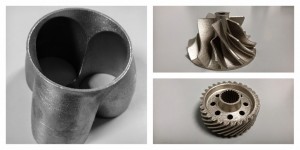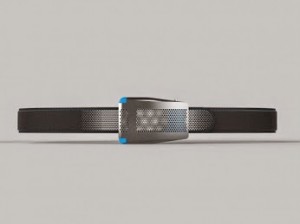 |
| Complex printed parts have the potential to drastically alter the automotive industry. |
What Are the Advantages of Selective Laser Melting for the Automotive Industry?
Recently the automotive industry is facing some tough times. The global economic crisis, the rise of emerging markets such as China and India, resulting in financial pressures from higher raw material prices have forced the industry to look for innovation. As a critical component of economic growth, national and regional employment of every industrialized country, the automotive market is obliged to find a better respond to the opportunities and challenges of the 21st century. The automotive industry has still the chance to be back at the forefront of macroeconomic growth and stability, only if manufacturers and supply chain participants understand the need to grow and change smartly. Technological advancement will benefit production; alter traditional supply chain pathways and leads to industry?s evolution. Newer designs, shorter lead times and lower cost are only some of the advantages of additive manufacturing. This new manufacturing technology based on 3D printing is about to revolutionize the entire manufacturing world and is most probably the only chance of the automotive industry to rise up again.
What Is Metal 3D Printing?
While the adoption of additive manufacturing from the automotive industry is still in its infancy with only few users compare to conventional methods, the 3D printing market has enormously developed and diversified in terms of techniques and materials. Metal 3D printing is an additive manufacturing technique that includes processes as selective laser melting (SLM) where fine metallic powders are fused together to create three-dimensional metal parts.
In general, the selective laser melting uses 3D CAD data and combines powder material and laser power in a layer by layer basis. One of the best 3D printers on the market right now for DMLS (Direct Metal Laser Sintering) is the EOS M280, covered previously on 3DEngr. The metal 3D printing process starts by slicing the 3D CAD file into layers and transforming it into a stl file that contains all important parameters. After a thin layer of metallic powder has been applied on a powder bed, a laser is used to melt the powder at the required locations until the size of the requested components is reached. The result is an industrial part of greater tensile strength and hardness with a density reaching 100%. No wonder that many automotive engineers use selective laser melting for creating functional prototypes for pre-series testing, but also try to incorporate it more and more in the real manufacturing process.
How Does the Automotive Industry Benefit from Selective Laser Melting?
New Shapes and Structures
Additive manufacturing gives great freedom in design. The metal 3D printing can produce highly customized parts with added improved functionalities that are not possible through traditional processes. Furthermore, the selective laser melting in particularly allows the manufacturing of components with hollows and undercuts, with thin walls and hidden voids. This flexibility cannot be achieved through conventional manufacturing methods.
New Combination of Materials
Selective laser melting of different types of alloys suits perfectly the needs of lightweight applications involving vehicle and engine technology. Mixing different raw materials as titanium, aluminium, stainless steel or nickel based alloys and constantly discovering new alloys with various strength and temperature resistance is close to impossible trough conventional manufacturing methods.
Cost Efficiency
Selective laser melting and also any other additive manufacturing technique doesn’t require any additional tooling. Therefore expensive sand-casting and die-casting applications can be finally replaced. This doesn?t only shorten development times, but also considerably reduces development costs. Industrial 3D printers can finish a component within hours compared to classical manufacturing techniques that will need days till weeks from prototype to end product.
Furthermore, selective laser melting creates parts using less energy and reducing material waste to a minimum. Less waste means significant cost savings and lower impact on the environment.
Additive Manufacturing provides revolutionary possibilities for the automotive industry in creating faster, safer and lighter vehicles of the future.
Find out How is 3d Printing Effecting Other Industries
 |
| 3D-Printing In The Aerospace Industry |
 |
| 3D- Printing Luxury Goods |
Ralitsa Peycheva is a technical content writer, interested in forging and casting techniques, latest machinery and tools; curious about new manufacturing methods; respecting high-quality engineering; discovering, observing and admiring the additive manufacturing industry. Follow her on Google + https://plus.google.com/u/0/+RalitsaPeycheva/posts

A nice article indeed. 3d printing is also growing in other application like aerospace, medical, marine and power generation. Electronic parts, wires and cables are designed at http://www.atlanticprecision.com/ at large scale. Door knobs, handles and hooks are manufactured with 3d metal printing. 3d printing is spreading everywhere. What do you think about changes in the food industry with 3d printing?
dear sir/madam
i am doing final year project in mechanical engineering at it Sligo.
my project is about 3d metle printed gears vs cnc manufacture gears. the porpuse of my project wat is the effect on 3d metal gears and cnc machined gears. what is the wear and tears. stress, strain test
advantage/ disadvantage
i need 2 gears same teeth ratio 1.1
please let me know
i want to purchases two 3d metal gears
thank you